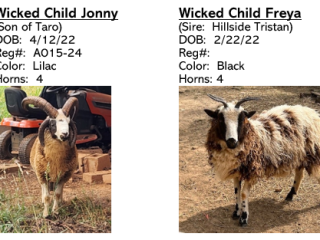Tunis Ewes
$225
I have 2 beautiful Tunis breeding ewes for sale. Their genetics represent our 23 years of breeding Tunis for their traditional Tunis traits. They are medium sized, proven breeders, clean legs and face, good red coloring, great mothering, straight top, well proportioned and in great condition. They are 6 years old, so we are selling them for much less than our young ewes. We would love to pass on these good, hard earned! genetics to another Tunis breeder. Our farm is located in southern Michigan 4 miles over the Ohio/Indiana borders.
- Species, Product, or Service: Tunis breeding ewes
- Breed Product or Service: Tunis breeding ewes




